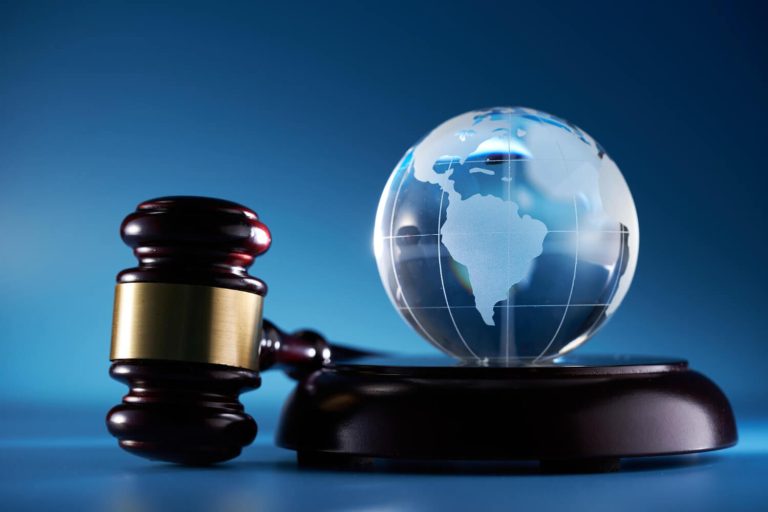Introduction:
In the ever-changing realm of digital business, it is crucial for organizations to continuously evolve and undergo transformation. This report, written by Toshiba’s Head of Transformation, offers the Strategy & Transformation (S&T) leadership team a thorough “Digital Transformation Report” proposal. This report has been structured with the motivation to analyse and assess Toshiba’s present digital strategy and infrastructure critically in order to pinpoint the most important areas where digital transformations are needed. The report’s recommendations are meant to make sure Toshiba prospers in the ever-changing digital business landscape while also maintaining its competitiveness. The report examines numerous cutting-edge technologies and digital practices through an analytical lens and offers a road map for Toshiba’s digital transformation towards resilience and long-term success.
Task 1: Opportunities and challenges analysis
Overview of organization:
Toshiba Corporation is a leading Japanese manufacturer and globally recognized brand, specializing in computers and electronic devices for both consumer and industrial markets (Britannica, T. Editors of Encyclopaedia, 2023). Established in 1939 through the amalgamation of the two companies “Shibaura Seisakusho” and “Tokyo Denki”, Toshiba is a component of the Mitsui keiretsu, a prominent business conglomerate (Toshiba, n.d). Toshiba manufactures a wide range of consumer and business products, including electronics like TVs, laptops, and DVD players, as well as industrial equipment such as semiconductors and electric power generation devices (Britannica, T. Editors of Encyclopaedia, 2023). Toshiba has been hailed as a towering beacon in the Japanese economy and a universally acclaimed brand with a distinguished presence across the globe (Susan Hass, 2018).
Spanning more than 140 years, Toshiba Group has been at the forefront of fostering a sustainable future, leveraging cutting-edge technologies for meaningful value creation. Adhering to their core ethos, “Committed to People, committed to the Future,” as outlined in The Basic Commitment of the Toshiba Group, they drive global initiatives aimed at shaping a world where future generations can thrive and live improved lives (Toshiba, n.d). Toshiba ranks among the largest manufacturing entities globally, encompassing ten distinct divisions supported by 29 laboratories and a network of 208 subsidiaries and affiliates (Cutts, 2002). As of March 31, 2023, Toshiba’s common stock was valued at ¥200,869 million. The fiscal year 2022 saw the company achieving consolidated net sales of ¥3,361.7 billion. The fiscal period for Toshiba extends from April 1 to March 31 each year. Furthermore, the consolidated employee count for the Toshiba Group was recorded at 106,648 as per the data available on March 31, 2023 (Toshiba, n.d).
Toshiba’s market scope extends across various domains, encompassing everything from consumer electronics to business solutions. Their market strategy includes both B2C and B2B models, covering products like televisions to renewable energy power systems. The company operates globally, with a presence ranging from the United States to its headquarters in Japan (Dickinson, 2016). In the realm of semiconductor manufacturing, Toshiba operates within an oligopolistic market structure. On the other hand, in the consumer electronics sector, the company competes in a market that is characterized by perfect competition (IvyPanda, 2020).
The analysis indicates that Toshiba has demonstrated effective market performance, excelling in consumer preference, durability, and production on both national and international scales. However, similar to many global companies, Toshiba is facing significant challenges due to digital disruptions. Below are some of the challenges that are currently faced by the organization:Top of Form
- Digital Transformation: The pandemic has accelerated digital transformation by 25 years within just 15 months. The landscape of business has undergone shifts that were hardly predictable. Temporary solutions created to aid suppliers and customers might not be sustainable in the long run. The data from the past two years is atypical, making it more challenging to make future predictions with the same level of certainty(Toshia, n.d).
- Shift to Digital Marketing: Recognizing the trend of consumers becoming more tech-savvy, Toshiba has seen the necessity to engage with its customer base through digital channels. Additionally, there was a general lack of awareness among consumers about Toshiba’s presence on social media, which resulted in lower engagement levels on these platforms(Adwright, n.d).
- Lack on Innovation: In an industry like technology where trends evolve at lightning speed, adapting to the rapidly changing preferences and needs of consumers is not just important, it’s a race against time. Toshiba needs to speed up its game and increase production of innovative products (Biznewke, n.d).
Moving on to some of the objectives that the leadership and strategy team has come up with in order to mitigate these challenges. To accommodate the diverse requirements of companies across numerous industries, we provide an extensive range of software applications. Each application is designed for easy integration with your current IT setup and is simple to manage (Toshia, n.d). Toshiba has a long history of providing remote monitoring for social infrastructure systems and industrial equipment. It has also continuously explored the creation of new services, integrating cutting-edge technical developments in areas such as AI and the Internet of Things (IoT) (Okiatni, 2018). Additionally, to boost the marketing strategies, on going trends have been followed along with promotion and giveaways campaigns through relevant agencies to attract the consumers (Adwright, n.d).
Task 2: Digital Business Agility Model
Businesses that possess digital business agility are skilled at seizing new market opportunities and handling challenges quickly and effectively often even before their rivals do. The following are the three main pillars:
Hyperawareness:
By actively monitoring consumer trends, market trends, and industry competition using advanced data analytics and market intelligence tools, Toshiba may greatly increase its understanding of the market. This plan will require a significant investment in technologies like as artificial intelligence (AI), big data analytics, and the Internet of Things (IoT) in order to gain immediate, in-depth insights into consumer preferences, market changes, and potential industry disruptions (Biznewke, n.d). For example, a fundamental shift in Toshiba’s approach with Spinex service, which provides an Internet of Things (IoT) interface that is customisable. To monitor and maintain vital infrastructure devices and equipment, it combines information technology with operational technology from physical, real-world surroundings. This signifies a fundamental shift away from the historical focus on hardware solutions and toward using data and digital software as important catalysts to inform and improve our customers’ business strategy (Yamamoto, 2022).
Informed Decision Making:
Toshiba must create a framework for data-driven, flexible decision-making that makes use of the insights obtained via hyperawareness. In order to evaluate data and deliver predicted insights, this would include integrating AI and machine learning algorithms. This would allow the business to respond to the changes happening in the market more quickly and intelligently (Kato, 2019). For example, in order to deliver precise services in a timely manner to management and operation workplaces, digital technologies are deployed. DX aims to achieve innovative process transformation that increases corporate value by enabling quick and flexible responses to the business and societal changes brought about by modern digital technologies. It also aims to generate new business opportunities. This entails using software to replace a lot of operations. There are more development areas in proportion to DX’s advancement. Advanced digital technologies such as artificial intelligence (AI) and the Internet of Things (IoT) will be introduced into existing systems through a process of trial and error without impeding the ongoing advances in operation efficiency (Kato, 2019).
Similarly, the digital transformation and the use of cyber-physical systems to increase the data and analytics capabilities are two of the most fascinating trends. Working with digital twins as a part of CPS enables us to address challenging problems and make informed decisions using AI, enhance our predictive abilities, and integrate digital and physical data (Yamamoto, 2022).
Fast Execution:
Toshiba would have to foster an adaptable and responsive organizational structure in order to guarantee prompt execution. This entails implementing agile approaches throughout departments, optimizing procedures for faster reaction time. Toshiba can also automate repetitive procedures and duties with digital tools, freeing up resources for more strategic endeavors (Toshiba, 2018). For example, with the help of its groundbreaking AI technology, Toshiba is now able to quickly identify speakers and keywords on a wide range of electronic devices without the requirement for internet connectivity or reliance on cloud processing power. With just three sounds, home appliances that include this technology will be able to identify individual speakers and modify their functioning in response to spoken commands (Corporation, 2020).
To summarise, Toshiba ought to prioritise improving situational awareness via technological means, making well-informed decisions grounded in real-time data, and guaranteeing that the organisational framework and operational procedures facilitate prompt and effective implementation. With this model, Toshiba would be better equipped to take advantage of new opportunities in the ever-changing digital business environment, as well as manage the difficulties posed by digital disruption.
Task 3: Digital-ready culture
A digital-ready culture is characterized by a collective embrace of values and practices that foster excellence in innovation and operational efficiency within a digitally-driven business landscape. It goes beyond merely communicating these digital-centric values; leaders must ensure that employees not only understand but also actively integrate these principles into their daily work routines (Westerman, 2020). For creating a digital ready culture in an organization as big as Toshiba, one must follow these key strategies:
Putting customers first:
Toshiba’s digital transformation ought to be guided by the demands and expectations of its customers. This necessitates a thorough comprehension of consumer habits and preferences, which may be attained via direct consumer interaction and data analytics (Toshiba, n.d). Every employee in the Toshiba Group operates with the goal of enhancing customer satisfaction (CS). This covers employees across all departments, including development, design, manufacturing, product quality, corporate personnel, and after-sales services, in addition to those who have direct contact with clients (Toshiba, n.d).
Creating a collaborative culture:
Digital projects can be supported by cultivating an environment of open communication and teamwork within the company. Collaborative tools, open platforms for idea sharing, and cross-functional teams can all be helpful (Toshiba, n.d).
(Milke-Takeuchi, 2022) said,
“To successfully “Create together” – across our core sites, as well as when working with HQ in Tokyo, or our partners and customers across Europe – we need to be open and honest about the challenges we face, and embrace change to ensure we progress.”
Innovation Focus:
Encouraging people to think creatively and innovatively can result in new digital solutions and process improvements. Hackathons, innovation laboratories, or specialized teams investigating new digital technologies could be helpful (Biznewke, n.d). Toshiba prides itself on its innovative culture, which promotes taking calculated risks and fostering creativity. They trust their employees to come up with original, imaginative ideas. Because innovation is valued and ingrained in the company culture, Toshiba actively encourages its creative employees to bring their ideas to their job. Innovation is promoted when workers’ personal characteristics and company culture place a high value on coming up with novel and original ideas (Whitfield, 2023).
Becoming a digital champion:
Toshiba in order to compete and win as a digital champion to win in the electronic market sector must come up with such advanced and innovative digital programs that are unique and attracts the market. For example, Toshiba’s communication AI, Recaius, addresses the challenge of effectively understanding and responding to human speech and behavior. It is designed to interpret people’s intentions from their actions and then communicate relevant knowledge to assist them in their activities. It allows for natural conversation, where users can simply speak to the Recaius AI app, conveying information about current happenings or observations in the workplace through a voice input and output interface. In environments where multiple individuals with different roles are present, Recaius can document interactions among people and between people and systems (Toshiba, n.d).
Task 4: Digital leadership
In order to facilitate Toshiba’s digital transformation, leadership abilities must be in line with the needs of a quickly changing digital environment. We can identify critical digital leadership competencies that Toshiba must have by following Daniel Goleman’s leadership styles as a guide:
Visionary and democratic leadership:
Toshiba’s leaders need to have a comprehensive idea of how digital technology might change the organization in order to lead digital transformation. In order to inspire and mentor staff members during the transition, they must effectively communicate this goal. This forward-thinking strategy is necessary to provide the digital journey a clear path and to inspire confidence. As its vision has always been “to raising the quality of life for people around the world, ensuring progress that is in harmony with our planet” (Toshiba, n.d). Similarly, working together and exchanging ideas are essential in the digital age. Toshiba can promote an innovative culture by welcoming participation and ideas from staff members at all levels. This all-inclusive strategy guarantees employee buy-in and can result in more innovative digital solutions (Cherry, 2023).
Coaching and Affiliative Leadership:
Digital transformation calls for fresh perspectives and abilities. To assist their team members in acquiring the required digital capabilities, Toshiba should take on the role of coaches. This entails coaching staff members, giving them feedback, and assisting with their professional development in the digital space (NSLS, 2022). Similarly, considering how disruptive digital change is, an affiliative leadership style could encourage harmony and team morale. Through putting people first, providing assistance, and fostering strong emotional connections, Toshiba may foster a healthy work atmosphere that is supportive of change (Toshiba Corporation, 2023).
Pacesetting and commanding Leadership:
Toshiba need to set high standards and lead by example in the fast-paced digital age. They ought to be fast to embrace novel techniques and skilled with emerging technologies. This needs to be balanced, though, to prevent overburdening their workers (Staff, 2022). Similarly, speaking in digital transformation, a more flexible approach is often preferred, although there are situations where a domineering style is required. To effectively handle problems, Toshiba must move decisively and give clear instructions in urgent situations or when quick action is required (Toshiba Corporation, 2023).
Toshiba’s ability to successfully integrate these diverse leadership philosophies will determine how well the organization adapts its approach to the demands and circumstances of its teams as well as the company’s overarching digital goal. If these strategies are followed, Toshiba will excel highly in its sector.
Conclusion:
This report has analyzed the impact of the digital disruptions within Toshiba. It highlights the necessity of adjusting to the quickly changing digital environment, tackling issues of digital transformation, the move to digital marketing, and the demand for innovation. The report presents a number of strategic objectives to address these issues, such as providing a large selection of readily integrated software applications and utilizing cutting-edge technology like AI and IoT. In addition, it suggests the Digital Business Agility Model, which emphasizes strategies to improve Toshiba’s operational effectiveness and responsiveness to the market with projects like Recaius AI. Lastly, the report emphasizes how important digital leadership has been in guiding Toshiba’s digital transformation to successfully navigate the opportunities and challenges presented by the digital era. By placing Toshiba at the forefront of the digital business space, this strategic strategy seeks to secure the company’s long-term success and resilience.
Bibliography
Adwright, n.d. Toshiba’s Social Media Challenges. [Online]
Available at: https://adwright.com/case-studies/toshiba-scoial-media/
[Accessed 15 12 2023].
Biznewke, n.d. Biznewke. [Online]
Available at: https://biznewske.com/swot-analysis-of-toshiba/
[Accessed 15 12 2023].
Britannica, T. Editors of Encyclopaedia, 2023. Encyclopedia Britannica. [Online]
Available at: https://www.britannica.com/topic/Toshiba-Corporation.
[Accessed 15 12 2023].
Cherry, K., 2023. Is Democratic Leadership the Best Style of Leadership?. verywell mind, 6 July.
CONSULTING, E., 2019. Leadership Styles: Commanding. 7 July, p. n.a.
Corporation, T., 2020. toshiba global. [Online]
Available at: https://www.global.toshiba/ww/technology/corporate/rdc/rd/topics/20/2002-01.html
[Accessed 15 12 2023].
Cutts, R. L., 2002. Toshiba: Defining a New Tomorrow Hardcover. 1 ed. s.l.:Penguin UK.
Dickinson, S., 2016. Interview: Toshiba on Discovering Consumer Insights Through Social [Interview] (16th July 2016).
IvyPanda, 2020. Toshiba Company and Its Competitiveness. [Online]
Available at: https://ivypanda.com/essays/toshiba-company-and-its-competitiveness/
[Accessed 15 12 2023].
Kato, H., 2019. Our CommonStyle, leveraging advanced digital technologies. DiGiTAL T-SOUL, Volume 28.
Milke-Takeuchi, A., 2022. harmonising culture and communication through “create together” culture [Interview] (2 2 2022).
NSLS, 2022. WHAT IS THE COACHING LEADERSHIP STYLE?. 28 July.
Okiatni, N., 2018. Toshiba Digital & Consulting Takes on New Challenges toward the Realization of Digital Transformation. DiGiTAL T-SOUL , Volume 26.
Staff, H., 2022. What is Pacesetting Leadership? Examples, Pro/Cons, and More. 22 September, p. n.d.
Susan Hass, P. B. a. M. N., 2018. Toshiba Corporation—How Could So Much Be So Wrong?. Journal of Forensic and Investigative Accounting, 10(2), p. 267.
t, n.d. s.l.: s.n.
Toshia, n.d. Digital Transformation. [Online]
Available at: https://www.toshibatec.eu/digital-transformation/
[Accessed 15 12 2023].
Toshiba Corporation (2023) n.d.
Toshiba, 2018. ARTIFICIAL INTELLIGENCE:, s.l.: IDC Research.
Toshiba, n.d. life at Toshiba. [Online]
Available at: https://www.global.toshiba/ww/recruit/corporate/worklife.html
[Accessed 15 12 2023].
Toshiba, n.d. LinkedIn. [Online]
Available at: https://uk.linkedin.com/company/toshiba-americas?trk=public_profile_experience-group-header
[Accessed 15 12 2023].
Toshiba, n.d. Toshiba AI Technology Catalog. [Online]
Available at: https://www.global.toshiba/ww/technology/corporate/ai/catalog044.html
[Accessed 15 12 2023].
Toshiba, n.d. Toshiba Global. [Online]
Available at: https://www.global.toshiba/ww/outline/corporate/history.html
[Accessed 15 12 2023].
Toshiba, n.d. Toshiba Global. [Online]
Available at: https://www.global.toshiba/ww/outline/corporate/profile.html
[Accessed 15 12 2023].
Toshiba, n.d. Toshiba Global. [Online]
Available at: https://www.global.toshiba/ww/sustainability/corporate/performance/social/cs.html
[Accessed 15 12 2023].
Toshiba, n.d. Toshiba Group Management Policy. [Online]
Available at: https://www.global.toshiba/ww/ir/corporate/overview/strategy/strategy-key.html
[Accessed 15 12 2023].
Westerman, D. G., 2020. Digital transformation: 3 steps to build a digital-ready culture. The enterprises project, 14 9.
Whitfield, B., 2023. The 4 Types of Organizational Culture and Their Benefits. builtin, 20 10.
Yamamoto, H., 2022. Toshiba CTO: ‘The possibilities of digital twins is game changing’. silicon republic, 6 May.
Yamamoto, H., 2022. Toshiba CTO: ‘The possibilities of digital twins is game changing’. silicon republic.








